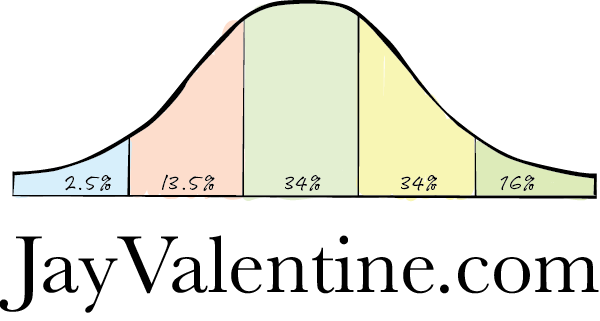
After a startup has had its third Sales VP, is perhaps on its E round of funding and it still is not breaking out, it is what one would call a restart—or a restart is what it needs.
It is at the edge of the Dead Zone. That is the space where many tech companies go. They cannot raise much more money after an E or F round, their stock dilution is so great they can only attract C – level execs from transactional companies and the CEO has found a new relationship with God as he or she prays every evening that someone will buy the company.
Usually the board brings in another CEO who they convince to join telling him or her that the problem was with the previous CEO or VP of sales. It never is.
They hire their third or fourth Sales VP who brings in all his/her pals, tells the board that the problem was “execution,” “messaging” or “we need to be more strategic.” Usually there are two or three quarters that look good as they close the pipeline created by the last unfortunate bunch.
Then, reality creeps in.
The problem is almost always because there is an inherent contradiction in the enterprise and it just cannot break out, no matter what a new exec team tries to do.
Inherent contradiction, from your Philosophy 101, is that characteristic, inherent in the company, which will always bound its growth. It is almost always obvious to everyone but the investors and top execs as they are blinded by their personal self-interest in a hopeful story.
There are common reasons for such a situation. Some can be overcome and others are simply fatal.
The Market is Too Small
Several years ago, I reviewed a parts logistics company to get its growth going in the Southwest where it had never sold a deal, after 7 years of life and get it into the aerospace market. While able to do both, it was of no help. Even after closing three multi-million dollar deals, it was not enough.
Early on, one could do a quick preview of its customer profile: Manufacturer that had a spare parts network to service its aftermarket. That parts business had to be several hundred million dollars to be able to afford the solution. In this market, there were at most 150 possible customers. There were also 2-3 other software players. There was no way this company could ever break out. It was in the Dead Zone.
With luminary board members from Bain Capital, somehow nobody ever figured this out. They went through several Sales VPs and finally sold the company for scrap. The founder and employees, many of whom had 10 years invested, got nothing.
It Is a Feature, Not a Product
Some startups have an offering that appears to be very interesting but when taken to market, it is only a feature, not a real product. A feature-only company becomes obvious in a competitive sales cycle where to get a full solution, this restart must live with its competitor filling in gaps where it cannot.
We saw this once in the performance testing market. The company could do some performance testing but had to watch its competitor fill out the solution with its load balancing product. Thus, when you need your competitor to make your product work you are in a bad place. The edge of the Dead Zone.
It Is a Nice To Have
Today we see so many startups with “nice to have” products that look cool, have great dashboards but are just not needed to solve a serious business problem. This appears very often in social media products where a company has some means of gathering social media, perhaps using AI, maybe using some secret algorithm to gather and present what one’s customers are saying in social media.
The CRM space is littered with Dead Zone companies who will never get a liquidity event.
Because this stuff is easy to do and the differentiators are slender, these companies get funded by third tier VCs but seldom, if ever, break out.
Sounds Good But Isn’t
In Austin several years ago we had a company build a Salesforce.com type of offering that was all around managing all the moving parts for tech partnerships. They raised a ton of money–one round alone was almost $20 million. They never got any traction, went through 4 Sales VPs, had tremendous positive publicity and were one of the best places to buy used Herman Miller top-of-the line chairs at their going-out-of business sale.
Too Hard To Explain
A few years ago, I was brought into a Boston company that was on its 3rd VP of Sales and this time they were going to do it right. They were going to hire the “fast and furious” whatever that meant and really get their distributive order management product to market.
The first 2 quarters for the new VP of Sales were just great. He and his team closed 7-10 deals in the $200,000 range—all of which had been in the pipeline for over a year. Then came the third quarter—nothing. Not a little, nothing. Zero new dollars.
Next quarter, another zero. The problem was that they could not build pipeline—they could not explain the product. The Sales VP got pushed aside and the marketing department did another positioning document. Nothing.
My team could see that the problem was the product was actually great but it was so hard to explain, nobody could prospect for it. That was the inherent problem.
Our solution was to build a storyboard, explain the product with a very interesting story (told to us by a customer), and within a quarter we closed a deal in services and product that amounted to $20 million. That was more revenue than the entire sales force had closed in 3 years.
That got the company sold to AT&T for $170 million and made the useless CEO a hero, now “entrepreneur in residence” at a Boston VC. Take money from these guys and this guy will tell you how to lose it.
AT&T could not explain the technology after a year so they sold it to IBM.
So sometimes you can solve these issues and get the hapless investors out whole, but when there is an inherent contradiction, you are pretty much screwed.
